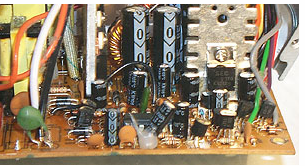As printed circuit boards (PCBs) become faster and more complex, designers are beginning to worry about signal integrity, heat, and electromagnetic interference (EMI) issues. However, judging from the results of the ‘EE Times 2006 EDA User Survey’, the respondents to the PCB sector all indicated that meeting the cost budget is their most important focus.
The questionnaire survey shows that more complex PCB circuit boards are gradually replacing simple double-layer and four-layer boards, at least in North America and Asia. Fifty-two percent of North American respondents, 39 European respondents, and 56% Asian respondents indicated that they are working on 5-layer or more-layer circuit board designs. A quarter of North American designers use 9 or more layers of circuit boards in their designs. The clock speed is already high and is still improving. In this regard, North American PCB designers are more advanced. The average clock speed is currently 837MHz and is expected to increase to 1.43GHz within two years.

A total of 622 engineers responded to this questionnaire on printed circuit boards, including 379 in North America, 128 in Europe, and 98 in Asia. "EE Times" research on other parts also includes chip design and FPGA design. Generally speaking, the current electronic system-level design contains about three PCBs, two FPGAs, and two ASICs or ASSPs.
More than half of North American and Asian PCB designers indicated that their companies outsourced part of their PCB design, but most of the outsourcing work is still in their respective geographic areas. For EDA tools, circuit board designers are usually most satisfied with the accuracy of the tool, but least satisfied with its price and authorization method.
Cost concerns top the list
In all three geographic regions, the biggest concern is meeting cost budgets. 55% of North American engineers called this problem ‘very serious’, followed by signal integrity problems (54%). So, as circuit boards become more complex, what problems will become more serious? North American engineers point to component edge rate (component edge rate) and IC package parasitics. Compared with the 2005 survey, this year's survey results show that engineers are more concerned about signal integrity, thermal/EMI, and IC package parasitics.
European engineers seemed to be most concerned about the deteriorating signal integrity in the past, but now only 34% of European designers consider it ‘very serious’. Asian engineers say that component edge change rates and IC package parasitics are slowly deteriorating.
Asian engineers’ concerns about meeting cost budgets have also diminished over time, perhaps because their EDA tool budgets have grown faster than in other geographic regions. Half of Asian engineers pointed out that their EDA tool budget in 2006 was higher than 31% in North America and 29% in Europe.
One way to solve the cost problem is to outsource. 53% of North American engineers, 47% of European engineers and 52% of Asian engineers pointed out that their company has outsourced part of the circuit board design work. In North America, layout and thermal/EMI analysis are the most frequently outsourced tasks.
Like this IC survey work, most of the PCB outsourcing work is not carried out overseas. As many as 91% of North American engineers said that their companies outsourced design work in North America, while 18% said they outsourced work to China/Taiwan, and 14% outsourced to India (this project is a multiple choice, so the total Over 100%). Similarly, European companies often outsource work to Europe, and Asian companies often outsource work to Asia.
EMI analysis tools are growing rapidly in Europe, and 20% of engineers are currently using them, and another 43% are expected to be used within two years. In Asia, 29% of engineers currently use EMI analysis tools, and another 44% are expected to use them within two years.
When evaluating various types of PCB tools, most of the respondents are very satisfied with the perfect tools, and most dissatisfied with the emerging tools. For example, 60% of North American engineers said that they are most satisfied with graphic capture tools, only 35% are satisfied with signal integrity tools, and 34% are satisfied with thermal/EMI analysis tools. The results in Europe and Asia are similar.
In terms of tool features, North American engineers and European engineers are most satisfied with accuracy, while Asian engineers rank "easy to use" first. The lowest satisfaction among all geographic regions is the cost of ownership, purchase cost, interoperability and automation. However, compared to 2005, North American PCB designers' satisfaction with most indicators has increased significantly, while satisfaction with large-scale design processing capabilities has declined.
Evaluation of suppliers
OrCAD is the most commonly used PCB tool supplier for North American and European users, with 48% of engineers expressing it. Mentor Graphics ranks second in North America and Europe, but ranks first in Asia with a score of 62%. In descending order, North American designers also mentioned Cadence, Mathworks, Electronics Workbench, Agilent EEsof, Altium, Ansoft, Flomerics, Sigrity, Zuken and Valor. Zuken's market share in North America is very low (3%) but is much higher in Europe (14%) and Asia (13%).
In terms of supplier satisfaction, Mathworks ranks first in North America, with 67% saying they are ‘very’ or ‘somewhat’ satisfied with this supplier. However, in Asia, Cadence ranks first, and in Europe, Ansoft leads.
North American designers have improved their satisfaction with every PCB tool supplier. The biggest improvement was Ansoft, with satisfaction increased from 42% to 55%.